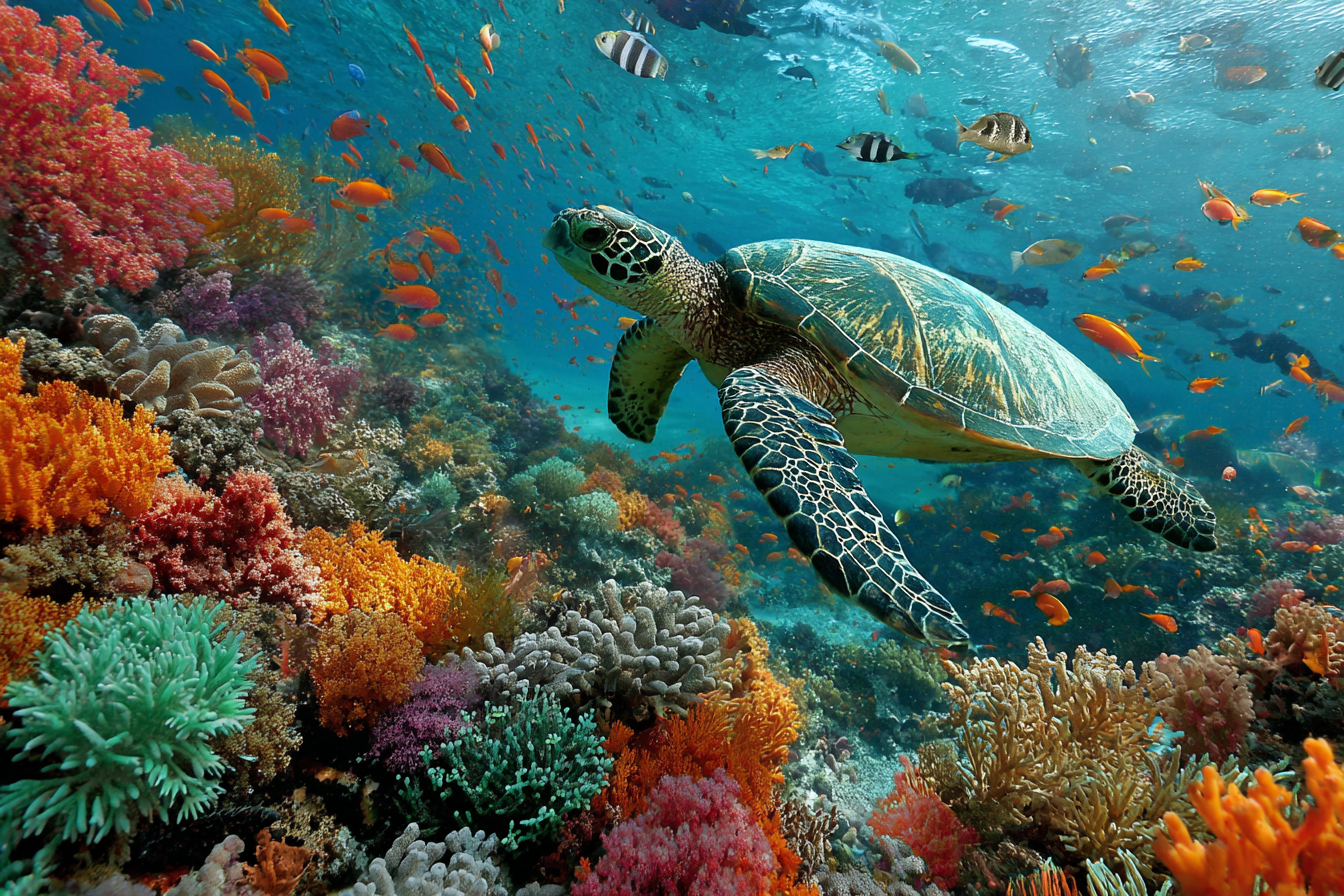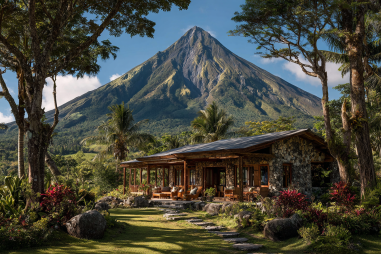Apo Island, a small volcanic island in the Philippines, is renowned for its exceptional marine biodiversity and pristine natural environment. It has become a must-visit destination for wildlife enthusiasts and nature lovers, particularly those keen on observing sea turtles, colorful fish, and other fascinating species. This protected marine sanctuary offers a unique wildlife watching experience that is both educational and unforgettable. If you’re planning a trip to Apo Island, here’s everything you need to know to make the most of your wildlife spotting adventure.
Overview of Apo Island’s Wildlife
Apo Island is celebrated for its rich and diverse ecosystems, both above and below the water. The island’s coral reefs are among the most well-preserved in the region, supporting a stunning array of marine life. Visitors can expect to encounter over 650 species of fish, vibrant coral formations, and several endangered species. On land, the island is home to various birds and small reptiles that add to the charm of wildlife watching here. Thanks to community-managed conservation efforts, Apo Island has remained a vibrant haven for wildlife, offering a rare glimpse into a thriving marine ecosystem.
Sea Turtles: Habits and Best Spotting Times
One of the main attractions of Apo Island is its resident sea turtles, especially green sea turtles (Chelonia mydas). These gentle creatures can often be seen gliding gracefully through the warm, clear waters around the island’s coral reefs. Sea turtles are most active during the early morning and late afternoon hours when the water is calm and the light is ideal for spotting them. It’s common to find turtles feeding on sea grasses near the shoreline or resting near coral formations.
For the best chance to see sea turtles up close, snorkeling around the island’s designated marine sanctuary zones is recommended. These areas are monitored to ensure their safety and to minimize human disturbance. Remember to be patient and move slowly underwater; sudden movements may scare the turtles away. Early mornings, especially between 7 AM and 10 AM, tend to be the optimal time for spotting these fascinating creatures.
Fish Species and Reef Life
The underwater world surrounding Apo Island offers a dazzling spectacle of tropical fish species and vibrant coral reefs. Snorkelers and divers can expect to see a wide variety of fish, including clownfish, parrotfish, angelfish, and butterflyfish, among others. The coral reefs themselves are teeming with life, with hard corals, soft corals, sponges, and sea anemones creating a beautiful mosaic of colors.
Some of the fish species here are particularly interesting because of their ecological roles—parrotfish, for example, help maintain coral health by grazing on algae. Reef sharks, moray eels, and occasional rays also make appearances in the deeper waters. The clarity of Apo Island’s water allows for excellent visibility, making it a paradise for underwater photographers and marine biologists alike.
Birdwatching Opportunities
While Apo Island is best known for its marine life, birdwatchers will also find plenty to enjoy. The island’s vegetation and coastal environment attract a variety of bird species. Common sightings include kingfishers, sunbirds, and various species of doves and swallows. Early mornings, just after sunrise, are the best times to spot these birds when they are most active and vocal.
The island’s relatively undisturbed habitats make it an ideal place to observe birds in their natural behavior. Bringing binoculars can enhance your experience, especially for spotting birds resting in the tree canopies or flying over the shorelines. Although Apo Island is small, its bird population adds nicely to the overall wildlife watching experience.
Recommended Wildlife Tour Options
To fully immerse yourself in Apo Island’s wildlife, joining a guided tour is highly recommended. Local tour operators and resort-based guides offer wildlife watching trips that include snorkeling and diving excursions, bird watching walks, and eco-tours focused on sustainability and conservation education.
- Snorkeling and diving tours: These tours are led by experienced guides who know the best spots to see turtles, reef fish, and coral formations safely and responsibly.
- Birdwatching tours: Small-group walks with local guides provide insights into the island’s bird species and their behaviors, often including tips on how to photograph and identify them.
- Conservation tours: Informative tours that highlight the community’s conservation efforts and explain how visitors can help protect the island’s fragile ecosystem.
Opting for these tours ensures you not only spot the best wildlife but also contribute to the local economy and conservation initiatives.
How to Observe Animals Responsibly
Respecting Apo Island’s wildlife and natural environment is crucial to preserving its beauty and ecological balance. Responsible wildlife watching involves the following practices:
- Avoid touching or disturbing marine animals, including turtles and reef fish.
- Maintain a safe distance while observing – use binoculars or underwater cameras with zoom lenses instead of approaching animals.
- Do not feed any wildlife as this can disrupt their natural behaviors and diet.
- Use reef-safe sunscreen to protect both yourself and the coral reefs.
- Dispose of trash properly or take it with you to help keep the island and waters clean.
- Follow the guidance and rules established by local conservation authorities and tour guides.
By practicing mindful observation, visitors help ensure that Apo Island remains a thriving sanctuary for wildlife for generations to come.
Impact of Conservation on Wildlife Visibility
Apo Island’s reputation as an excellent wildlife watching location is largely due to its strong conservation efforts. The island’s marine sanctuary was established in the 1980s as a community-led initiative, significantly reducing overfishing and habitat destruction. These efforts have allowed marine populations to recover and thrive remarkably well.
Because of conservation measures, sea turtle populations are stable, coral reefs continue to regenerate, and fish densities are higher than in many other areas. This improved abundance means that visitors have a higher chance of spotting rare and diverse marine creatures. The ongoing protection and monitoring of Apo Island are a shining example of how community action and sustainable tourism can work hand in hand with nature.
Tips for Enjoying Wildlife Watching on Apo Island
Maximize your wildlife watching experience on Apo Island with these helpful tips:
- Visit during the dry season (November to May) for better visibility and calmer seas.
- Bring snorkeling gear and underwater cameras to capture the vibrant marine life.
- Wake up early to catch the most active moments for turtles and birds.
- Wear lightweight, protective clothing and reef-safe sunscreen.
- Choose eco-friendly accommodations that support local conservation efforts.
- Listen closely to guides and respect all wildlife guidelines.
With preparation and respect for the environment, your visit to Apo Island will be a memorable and enriching experience filled with incredible wildlife encounters.
Whether you’re marveling at majestic sea turtles, swimming alongside colorful fish, or spotting tropical birds, Apo Island offers a rare chance to connect with nature in one of the Philippines’ most treasured marine sanctuaries. Embrace this enchanting destination responsibly, and you’ll leave with a deeper appreciation for the vibrant life beneath the waves and an inspiring story to tell.







